Text
More is Less!
by Phill Wright
So, you’re training regularly and feeling great right?? Well, you were until your body adapted to this awesomely active routine and now it’s simply habit and actually it’s becoming a little (very) frustrating. The harder you push yourself, the more fatigued you seem to become and the less you seem to be seeing any benefit. You’re still highly motivated and getting to the gym isn’t the problem…in fact, you’re almost training every day! Sound familiar? If so then you and your body are most certainly in need of a training intervention…a break, a change…a complete refocus. There is no need to worry or panic, you are simply in a routine that is no longer serving you. The thing is, exercise can become pretty addictive, after all, it feels good to move and your body was never designed to sit down for hours on end. After a nice hot shower it feels great to walk from the gym after a training session with that ‘I know I’ve just trained’ feeling in your muscles…almost too nice and actually, that post session sensation can hook you into a rather permanent state of muscle-numbness.
If this is all starting to sound freakishly familiar then it might be time to rethink your habits.
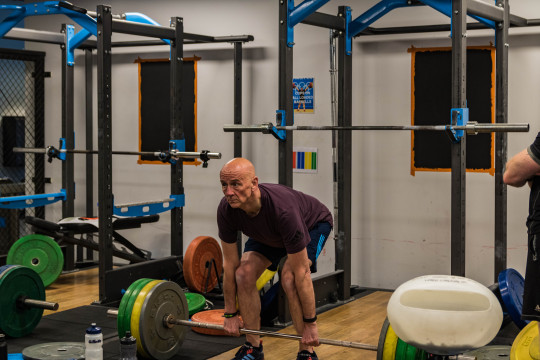
There are a few things at play here:
Firstly, there is the law of diminishing returns. The fitter you get, the leaner you become and the more finely tuned your body becomes, the less room there is for big improvements. Let’s take a look at opposite ends of the spectrum; a newcomer to a fat loss programme. If they have a lot to lose and they follow the guidance they will stand a very good chance of being the biggest loser in those first few weeks and this works well for the programme as it gives a nice big ‘fat’ welcome to those just getting started. And conversely, take an olympic sprinter, their training cycle is 4 years. Think about all the training sessions, dedication and sacrifice across 48 months that goes into the potential of chopping a hundredth of a second off their PB.
Secondly, there is the law of adaptation. Your body is the smartest and most sophisticated machine on the face of this planet…well, second to that of a stealth leopard* but it’s still pretty remarkable. The body adapts very quickly to what it is subjected to. Whether it’s a change in temperature, climate or new types of training, your body will adapt to these pretty rapidly and figure out how to efficiently overcome / manage them. From a training perspective this means that over a period of time (and in some instances just weeks), your body starts to benefit less. Why is this? Well, your body is able to overcome the activities with less effort meaning that the recovery process is quicker and the subsequent adaptations are less (read more on how training works here).
Finally, there is the more psychological aspect and this can often be the most challenging. We are all human and like it or not we are ruled by emotion. We laugh, we cry, we get excited, we grieve…we are driven by emotion. Emotions affect our energy levels, our state of mind, our ambition (or lack of)…our every decision! When we form new habits, we emotionally adapt to them and build a new set of beliefs shaped around these activities. We believe that our lifestyle choices are correct and rightfully so, there’d be little point committing to activities that you didn’t believe in. However, just like muscles, our mind becomes conditioned to what we’re presenting it with. If you’ve become accustomed to HITT training or going heavy then both physically and mentally your body is used to training at high intensities. This does not mean that training at high intensities is the only way to train and get the results you seek, it simply means that you have created those conditions for your time in the gym and you have become used to them. The thought of training at low intensities or with low weights is likely something that you wouldn’t value, why would you? Your body is designed for the fast lane and anything falling short of this is simply inadequate. Does this mean that low intensity training wouldn’t provide your body with heaps of benefit? Not one bit!!! It simply doesn’t register in the conditions you have set yourself. Chances are it would actually be a lot more beneficial than another hard-ass session, convinced?
The easiest way to understand this is by considering yourself and your body as a machine (which it is). If you owned the most precious machine on the planet, as well as taking care of it you’d likely be keen to make sure that it operated maximally. And to do this you’d fuel it, service it, work it at different gears and levels, give it time off and be careful not to overdo it when firing on all cylinders. Your body is no different! Your body needs different intensities and a bit of TLC. If you want to be fast then you need to spend time working on efficiency; if you want to be strong then you need to build a solid foundation and work on technique; if you want to a great physique then think about the muscles the mirror isn’t showing. Avoid the trap of using exercise as a short term fix. An effective programme includes different training types, working at different intensities and is progressive. And more than that, an effective training programme should be considerate of your mindset and how you approach training. If you enjoy different training types, different intensities and rather than just focussing on the outcome you are able to enjoy the journey then you are well centred on the right track.
It was never survival of the fittest but of those most adaptable to change. And whilst we’re not talking about escaping from dinosaurs, if you want your exercise habits to stick around and keep you active well into later life then change should be a constant and something to embrace.
*stealth leopards do not exist, they were temporarily created to add impact to this blog
If you’re considering a career in fitness or thinking about more training then complete this short questionnaire
1 note
·
View note
Text
Great tips, simple and practical
10 Ways to Defeat Boredom at the Gym
By Steven Cuthbert and Claire Warren
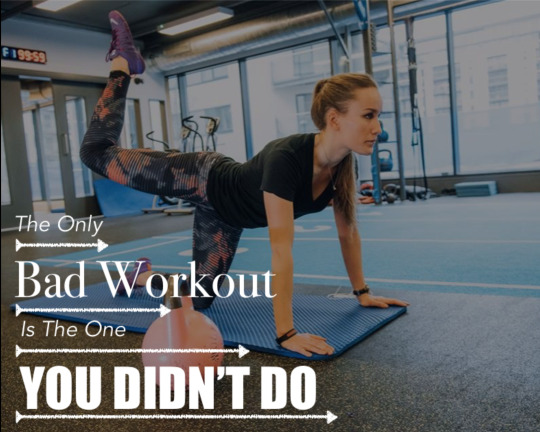
We’ve all been there…
“Work’s busy / I’m feeling tired / the housework’s piling up / I’ll start next week / it’s been a tough day…”
There are millions of excuses for not keeping up with your exercise routine.
The truth is, if you’re making excuses not to do something, it’s not necessarily because you’re lazy or uncommitted - it’s usually because the thing you’re trying to get out of just isn’t keeping your interest.
Think back to when you were at school… in the subjects you hated you’d call in sick, turn up late or just not pay attention. In the subjects you loved, you were the model student.
The same applies to the gym. If you enjoy your training - you’ll be a model gym member!
It’s not surprising that so many people lose interest in the regular gym routine though - sticking your headphones in then running endlessly on a treadmill while watching “Neighbours” with subtitles and never speaking to anyone… yawn!
Don’t get me wrong, I’m not saying training in a big globo gym is bad for everyone… if you like being in your own little world, you find this sort of routine does keep your interest and gets you results… by all means carry on doing what works for you!
However, if you are one of the many people who find it difficult to maintain motivation, it might be worth trying something new.
Here are my Top 10 tips to keep your training interesting…
1. Train With A Partner

Training by yourself can be boring, you often won’t push yourself as hard and you may slack off with certain exercises. Plus, when you go to the gym alone, it’s only yourself you have to answer to if you decide to give it a miss.
Having someone there to encourage, support and even compete with, can really uplift your training as well as adding accountability for turning up in the first place!
In Primal’s classes we often use partner exercises, encouraging people to work together. It breaks down barriers, helps you make friends and creates an awesome environment of camaraderie in the gym.
2. Train Mindfully

Aside from all the obvious physical benefits of training, there’s a whole bunch of psychological benefits too…
Exercising is a fantastic opportunity to unwind, de-stress and relax by taking some time dedicated to you. It also gives you a huge endorphin rush, leaving you with an incredible sense of wellbeing (ever found yourself standing the shower post-workout feeling like Wonder Woman or Superman?)
Being conscious of the mental advantages of training will help you make it a higher priority in your life and all those excuses like “it’s been a tough day / I’m too stressed / depressed / overworked etc” will become a reason TO workout, instead of a reason to give it a miss.
3. Try Something Different

Doing the same old thing, day after day, week after week can become really monotonous. Try and add in something new once a week to spice things up.
In the gym - turn back squats into front squats; if you’re a powerlifter try bodyweight exercises; if you normally do your cardio on the treadmill, pick up a pair of boxing gloves and smash the bag for 10 minutes.
It doesn’t have to be in the gym though - think outside the box: rock climbing, trampolining, swimming, outdoor bootcamps… whatever floats your boat.
4. Set Yourself A Challenge

Setting yourself goals to work towards and a deadline for achieving them is a great way to stay on track. It could be something major, such as signing up to a half marathon or Primal Stampede, or something small such as knocking 10 seconds off your Fit Test time at Primal.
5. Learn A New Skill
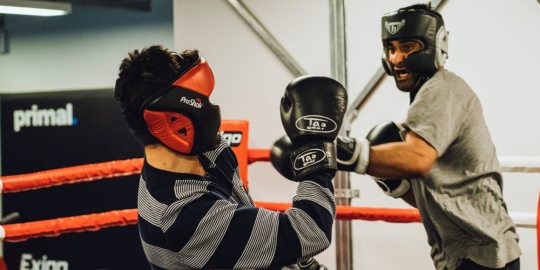
Taking up a specific activity turns your exercise into an exciting journey, with a destination to aim for.
At Primal we run a number of Clubs and Masterclasses in which our members are taught a specific skill, such as the the Kickboxing Masterclass, the MMA Masterclass, the Boxing Club, Calisthenics Club, Kettlebell Club and the Powerlifting Club and Weightlifting Clubs, where many members go on to compete in regional and even national competitions.
6. Join A Fitness Community

Some gyms now have their own online communities whether it’s a Facebook group, an online forum or a member’s site.
Joining and participating in groups like this is a great way to boost your motivation, feel like part of a team and take inspiration from others who are achieving their goals.
Check out Primal’s members page on Facebook - Team Primal.
7. Re-Frame Your Mindset
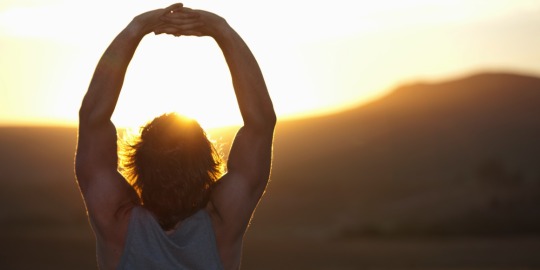
Swapping the disempowering language you use when you talk to yourself for empowering statements can be extremely motivational.
In NLP (Neuro-Linguistic Programming) terms, people are either ‘toward’ motivated or ‘away’ motivated. 'Toward’ motivation is working towards a goal (e.g. your first 10km road race) while ‘away’ motivation is working to avoid a situation (e.g. wanting to avoid becoming diabetic).
‘Toward’ motivation tends to be a much stronger driving force as it allows you to focus on positive goals ahead, instead of concentrating on negatives and getting frustrated when there are no obvious milestones.
8. Don’t Take It Too Seriously!

If you mess up a workout, it’s not the end of the world.
Unless you’re a professional athlete or preparing to compete, there is no reason to be stone-faced.
Enjoy what you do, stick some good tunes on, zone-out and chase your goals. If you don’t enjoy the process, is there any point doing it?
9. Schedule Your Workouts

The best way to stick to any sort of routine is to schedule it in. Once it’s in your diary - it’s official!
Think about it…you never wake up in the morning thinking, “hmm…I think I’ll go to the dentist today!”, you book an appointment ahead of time then turn up because you booked it and therefore made a commitment.
In the same way it’s not likely you’ll find yourself thinking “hmm…I think I’ll go to the gym now.” Book your classes, clubs and solo training sessions into your diary ahead of time and you’ll be much more likely to turn up.
10. Make It Fun!
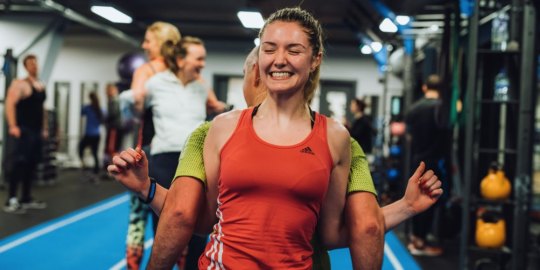
If it isn’t fun, it won’t last - simple as that.
If you find hours of cardio therapeutic - as many do - great! Anything that settles the mind and gives you some “alone time” is serving an important function.
However, if you find plodding out 40 minutes on a stepper about as rewarding as a politician’s promise, it won’t be long before you’re finding other things to do come gym time.
If it isn’t fun, it won’t last and if it doesn’t last, it’s not going to get you into shape.
______________________________________________________________________
The question I’ll leave you with is… is what you are doing right now working for you?
If the answer is yes, brilliant - keep chasing those results.
If it’s not, what’s the harm in trying something new? It might be the missing the piece of the puzzle you need to get the results you want.
Grab yourself a week pass for Primal and we’ll see you in the gym soon!

4 notes
·
View notes
Video
youtube
As fitness professionals, does behavioural and mental coaching matter as much as physical coaching?
Primal Academy Tutor Sharon Jones looks at the importance of psychology when training your clients.
For more help mastering the foundations for long term behavioural change with your clients and creating a mindset for success in business, fitness and life, book onto this 3 day course: NLP Fitness Coaching Diploma.
Booking and info: http://bit.do/NLP-fitness-coaching

#fitpro#fitness professionals#fitness career#NLP#mindset#personal training#Personal Trainer#personaltraining#fitness#fitfam#fitnessbusiness
2 notes
·
View notes
Text
10 Primal Flows to Help You Move More, Move Better and Get Stronger
By Kim Tomlin, Primal Flow Instructor
youtube
I was first introduced to Primal Flow back in 2010, when the concept was still in its trial period but I loved it straight away. It was definitely a challenge back then...and still is now!
When I qualified as a Personal Trainer, Primal Flow Instructor was one of the first courses I went on. I knew it was going to be a great tool for training my 1:1 clients as well as group training.
BOOKING AND INFO

The Benefits
Primal Flow is effective, fun and can be tailored to any goal. It is as tough as you want it to be and as simple as you need it to be.
As no equipment is needed you can take Primal Flow just about anywhere - workout on a plane, the kitchen table, in a tent, the bath or on a traffic island!
I’ve used Primal Flow with all my clients, or at least taken the principles of what it’s aiming to achieve. I ran a Primal Flow class for 2 years and have taught it in groups both inside and outdoors.
It’s a versatile training system for all ages and abilities and is easily regressed or progressed accordingly.
youtube
The Importance of Movement
As I’ve learnt and developed in my career I’ve become more aware of how we move (or don’t!) and how important it is that we move more often, more freely and get stronger.
Ultimately that strength becomes really beneficial in what we do outside of the gym as that’s where we actually spend most of our time; at work, with family and with friends – enjoying ourselves.
Why wouldn’t you want to be fitter and healthier to do all the things you love?!
Primal Flow allows you to move in the way you were designed to move - as one big, connected, “moving machine”.
Utilising all three planes of motion (Sagittal, Frontal and Transverse), Primal Flow tests your balance, strength, endurance, mobility/flexibility and much more.
youtube
The Possibilities
I’ve used Primal Flow to help clients achieve sports-specific goals, to encourage movement in clients who spend a lot of time sitting down and even with older, less mobile clients. I’ve used it with my pre/post-natal clients and those who travel a lot and need a workout for their hotel room.
I’m constantly amazed at the creative possibilities of Primal Flow when putting together specific Flows to suit the needs of my clients. They love creating their own Flows as well; even giving some of the moves some creative names – my favourite has to be the “Squist” (it’s a squat with a twist!)
What makes Primal Flow different is the way it allows us to build up movements that flow together, rather than repeating movements. It’s not often we repeat the same movement over and over, rather we perform a combination of movements one after the other.
The possibilities of what can be achieved using Primal Flow are endless. It can be a warm up, a cool down, a mobility drill or a main session.
youtube
Who’s It For?
If you’re a trainer looking for inspiration this is a course for you; it’s extremely practical, very explorative and you’ll learn how our muscles work together for function through our various sling systems. Nothing works in isolation.
Equally, you don’t have to be a Trainer to benefit from or get involved with Primal Flow.
Perhaps the following resonates with you?
Sitting down for several hours a day
Use machines all the time at the gym
Feel stiff from inactivity
Have very little time to workout
Travel a lot
Don’t belong to a gym
Bored with your current training
Want to switch off from life’s woes and have some “me time”
Primal Flow answered a lot of these issues for me when I first embarked on self-employment and my priorities shifted. It helped keep me focussed, engaged and kept me moving when I’d otherwise spend hours at a desk.
youtube
If you want to learn more about the benefits then check out the next course at Primal Academy. Become a Primal Flow Instructor and join the movement; it’s revolutionary!
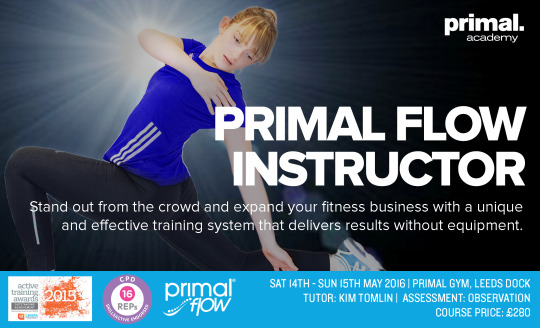
BOOKING AND INFO
#primal flow#movement#exercise#workout#training#mobility#flexibility#strength#core#fitness professionals#fitness course#fitness education#fitspiration#fitblr#fitblog#Primal Academy#Leeds
0 notes
Text
8 Steps to Beating the Opponent in Your Mind
By Ste Gordon

What makes the difference between someone who is really good and someone who becomes a champion?
In my competitive sport of choice - Kettlebell Sport - one thing is certain: you have to have a strong mentality.
At the beginning of last year, I was really struggling to last 10 minutes in competitions and get a decent result.
The turning point came when I had to sat down and gave some real consideration to my mental preparation. The more I studied, the more I began to build a good system to help my inner strength.
These 8 points have really helped me get my mindset right for training and competition.
youtube
I also asked a few different world champions what it takes to be the best...
Pro Boxer and former IBF World Champion Stuart Hall said simply: “mental strength”.
Absolute world champion (Kettlebell Sport) Ivan Denisov said: “you will see it” referring to ‘believe it to see it’.
World record holder and world champion of kettlebell lifting Anton Anasenko said: “heart, hard work, family and a good life”.
To learn more great techniques for keeping yourself or your clients focussed and in the zone, join me on April 1st for this 3 hour workshop on Building the Mindset of a Champion...

BOOKING AND INFO
#training#personal trainer#fitpro#fitness career#fitness education#fitness course#fitnessrevolution#fitfam#leeds#fitnessqualification#fitnesscourses#leedsfitlife#teamprofit#fitpros#fitfluential#career in fitness#career in fitness and health#become a pt#become a trainer#success with clients#client success#mindset#results#fitness results#fitness success
0 notes
Text
How I Made Over £400 Per Month from Kettlebells
By Kev Westerman, Primal Academy Tutor & Senior Coach at Primal Gym
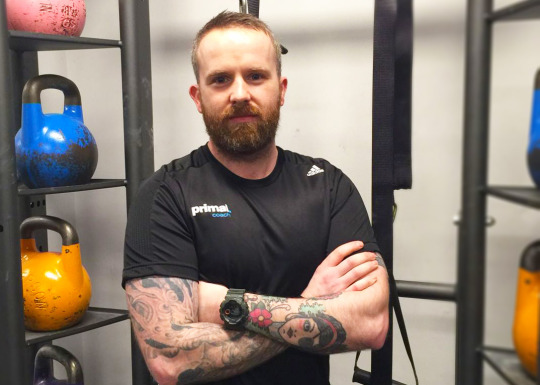
“You don’t have to be great to start, but you have to start to be great” Zig Ziglar
There are numerous health and performance benefits to be had by simply including kettlebells into your clients’ programmes.
But for personal trainers, there’s one major benefit…and that’s financial!
As a PT, having just one area of specialisation could put a swift end to your career.
Yes, you’ll be an expert in something you're passionate about (bodybuilding powerlifting, olympic lifting etc) but before you know it, you’ll have all your clients training in your preferred discipline, on programmes you want to do - not necessarily what the client wants or needs.
Now that’s all well and good if you're being paid to be a powerlifting or Olympic lifting coach but when you are working the gym floor or setting up a private business and pitting your skills against other PTs who are all trying to boost their client base, it’s vital to expand your knowledge and skills set.
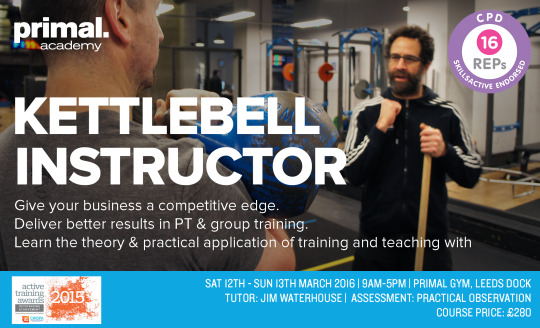
BOOKING AND INFO
I was using kettlebells a long time before I became a coach. I thought I could swing, snatch and get-up; little did I know how wrong I was!
When I started out as a trainer, I thought I could ‘wing it’ with clients, but it soon became apparent that I just didn't know the correct coaching cues or have the confidence to teach them the basics without risk of injury.
Free tip #1: Don’t injure your clients…the money soon stops!
Like the majority of new Personal Trainers, money was tight for me at the beginning. To boost my client numbers, I realised I needed to boost my skills so I set out get my Kettlebell Certification. That’s where I discovered Primal Academy.
Free tip #2: If you find a certification that seems a little too cheap e.g. “Level 1 Kettlebell Certification for £50″ - it’s probably too good to be true!
Over two days on the course, I learned the foundations of kettlebell training and how to teach these new skills in 1-2-1 and group sessions. This was certainly a practical course and by the end I was sore in places I didn't even know existed!
The following week I purchased a set of kettlebells and was ready to go.
Free Tip #3: Don't just make do with what you have! If your gym’s equipment isn't up to spec, ask them to replace it or ask if you can invest in your own equipment to keep at the gym for your use.

My clients benefitted instantly from my new skills - I could now correct and cue them effectively. My PT-ing turned into coaching which added extra value to my service.
I took a look at my schedule and noticed I had some hours spare, just outside of peak times, which I was struggling to fill. So I decided to put on a cheap group kettlebell session.
This was the offer:
All Levels Kettlebell Session
3 x 1 hour sessions per week
£60 for 12 sessions (paid up front)
£10 per single session (drop in session)
I posted this on the gym’s Facebook page and, by the end of my shift, I had 7 people, all paid up. That’s £420!
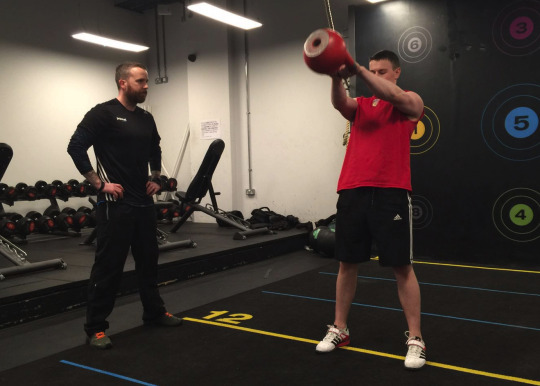
That £420 covered the cost of the course and the kettle bells I’d bought.
These 7 clients stayed with me at that gym for over a year and I’m still coaching most of them at Primal even now.
So why Kettlebells?
Kettlebells are such a versatile tool - they're pretty much an entire gym condensed down into a simple cannon ball with a handle.
Following a structured, periodised kettle bells programme will have the following benefits:
Increased fitness, performance and power output
Increased lean mass and fat loss
Increased strength and cardiovascular endurance
Great pre/rehab tool
Improved movement patterns
Improved mobility
To give your PT business the competitive edge and deliver better, safer and more effective results in both PT and group training - get signed up to Primal Academy’s 2 day Kettlebell Instructor Course - 12th and 13th March or 17th and 18th September. Booking and info here.
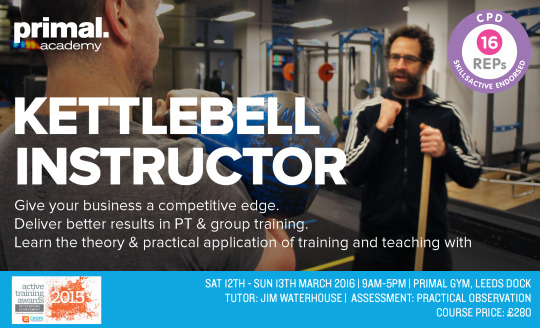
#kettlebells#kettlebell#fitness education#fitness course#fitspiration#education#personal training#fitness#fitfam#business#fitnessbusiness#fitpro#fitblr#fitspo
2 notes
·
View notes
Text
The 5 Best Suspension Training Exercises
By Phill Wright, Primal Academy Director & Tutor

Best known for its versatility, suspension training offers a unique way of developing strength, stability, flexibility and muscular endurance whilst also allowing you to adjust the difficulty levels without having to add or remove weights; it’s as simple as adjusting your own body position.
Suspension training is extremely dynamic and can offer something to all goal types and ability levels. It’s perfectly suited to group training as well as one to one PT. It's fair to say, it’s in a league of its own.

BOOKING AND INFO
Yet with the shear range of movements suspension training provides, it would actually be easy to over-complicate programmes, thereby reducing its effectiveness.
If I've learnt anything from this industry, it's that simplicity is king. Not only does it make it much easier on the client, it makes your life easier too.
So, here are my 5 top suspension training exercises that are simple, yet offer top-drawer impact for your clients:
1. Inverted Row
youtube
Great for developing core stability, glute control, improving posture and strengthening up the often weak areas in the mid to upper back, this staple is a solid contender that could arguably feature in most programmes.
2. Horizontal Press
youtube
A natural progression to a press up, the horizontal press helps develop much greater shoulder and wrist stability whilst requiring solid core engagement. As with standard press ups, slowing down the eccentric phase will enhance the stability and strength gains.
3. Pistol Squat
youtube
As with any unilateral exercise, this exercise will help develop control and strength on each side independently reducing lateral dominance. But this exercise offers much more! As a movement, the pistol works through full range at 3 major joints, engages the glutes, adductors and abductors like no other and is one of those exercises that demonstrates a measure of good form. However, the reality is that most people will never have the ability to perform a bodyweight pistol but with the added support of suspension straps it becomes very possible.
4. Roll Outs
youtube
You may well know these under a different name, historically done with an ab wheel. As with most suspension training exercises, the added variability through adjusting the body position gives scope to adjust intensity but also to shift the focus of which muscles are bearing the brunt. Not only is this exercise great for shoulders and lats, it's fantastic for core strength but more importantly, it helps people develop body awareness and become more familiar with a strong abdominal brace position. As opposed to a static plank position which tends to always performed on a flat surface, adjusting the roll out with different angles teaches the body to brace through varying positions each with a subtly different emphasis and ultimately building a stronger and more dynamic base of core strength.
5. Mountain Climbers
youtube
A favoured bodyweight exercise for core stability and function. Performing with feet harnessed in the straps is a great progression to the bodyweight version. Not only will the abs be working much harder due to the instability factor, they'll be doubling their efforts with the hip flexor group not actively having to keep the legs off the ground therefore maintaining a continual tension.

For more great exercises, to master technique and for ready-to-use programmes to release on your clients, jump onto Primal Academy’s one-day Suspension Training course on Saturday 23rd April.
#fitness education#fitness course#education#skills#suspension training#TRX#fitness pro#fitpro#fitspo#fitblr#leeds#personal training#group training#exercise#fitness#strength#power#core
2 notes
·
View notes
Text
11 Reasons Why Bootcamps Will Boost Your Fitness Business
By Phill Wright, Primal Academy Tutor

You’ve either thought about bootcamps and not yet pursued the idea, or perhaps dipped your toe in the water without fully immersing yourself...
The truth is, running bootcamps can transform your business and so many PTs are absolutely smashing it right now! It may well be the perfect time to start turning those ideas into action so here are 11 reasons to get started...

BOOKING AND INFO
Brilliant ROI
(That’s return on investment). Let’s face it, as a PT the biggest asset you have to offer is your time but there are only so many hours in a week. Whilst you could sleep less and see clients more, wouldn’t it be more appealing to just get a much better hourly rate? Succeed with a bootcamp and you could take your hourly rate into the £100s and moreover become consistent month to month.
Better Results
Generally, people work best to short term goals and a well structured bootcamp with targets for people to work towards, clear guidance, support, a team of people onboard and focus, your clients will see incredible results.
Better results = fantastic reputation = more clients!
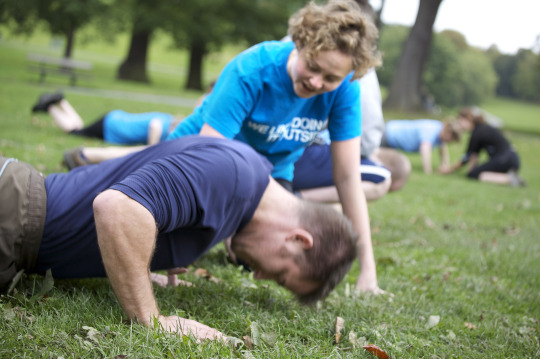
Low Overheads
Or possibly even none at all! Whilst some councils and land owners charge a rent or expect some form of contribution, these costs are significantly lower than rental of a facility where you’re paying for everything else that comes with it; heating, lighting, showering facilities etc.
Apart from any ground rental or license, the only costs are your time and travel. Get your margins right and you’ll be creating a very healthy opportunity to solid profit.
Build a Community
Bootcamps are a highly effective way to build awesome communities. Your members will enjoy a shared experience - the tough times, the fun times, the really wet and muddy times.
All this knits a very unique bond between your clients and the social support of the community helps them commit to the programme, encourage and welcome new members as well as increasing of word-of-mouth marketing.
A happy family stands out!!
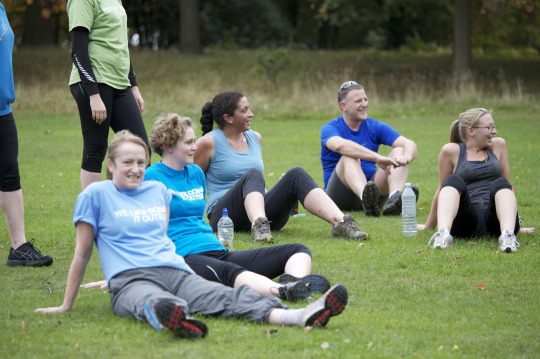
Freedom
Running a bootcamp means you’ll have space and lots of it! You’ll have the freedom of shaping your training however you want, without the four walls of a gym to restrict you. You can explore different types of equipment and partner or team-based activities that are often so much easier outdoors.
You’ll also have the freedom of designing your pricing and packaging. Often when working within existing facilities PTs are bound to keep their pricing in line with the organisation’s structures. This can limit your profitability.
Fewer Distractions
Gyms can be distracting places! With all the music, mirrors and other members about, your clients can easily be distracted which can ultimately affect how much they get out of the session. In the middle of a park, things are different. Your clients are there to do the session. As long as you deliver an effective, stimulating, challenging session you’ll have a focussed group of members enjoying the benefits of the training to the full.

The Weather
Hmmm…is this a benefit? I would say yes! Firstly, being outdoors you’ve got the fresh air, which is much better for your members than dry reconditioned air that can aggravate breathing conditions.
Secondly, seasons and weather conditions change and building a community that becomes hardy to change is an incredible trait that will keep them committed long term.
There are also deeper physiological benefits as well...as your members adapt to moving around, running and jumping on different surfaces they will become more resilient to injury, creating stronger and more robust proprioreceptors and mechanoreceptors.
It’ll also give you greater options. After all - you’d never be able to introduce sledging or snow man building as part of your ordinary gym session would you!?
No Size Limitation
Often we are bound by space, be it in a studio or on the gym floor, as to how many people we can cater for. Unless you’re in a very small field or park then you should be able to increase your maximum quite considerably.
The only limitations will be your confidence, how well you control the session, the types of activities you do and use of equipment.
If you get to the point where you’re maxing out then having a further instructor allows you to safely increase the numbers. For experienced coaches I would suggest that a ratio of 1:18/20 is fine (dependant on your activities) but the most important thing is that you are confident and your members are safe.
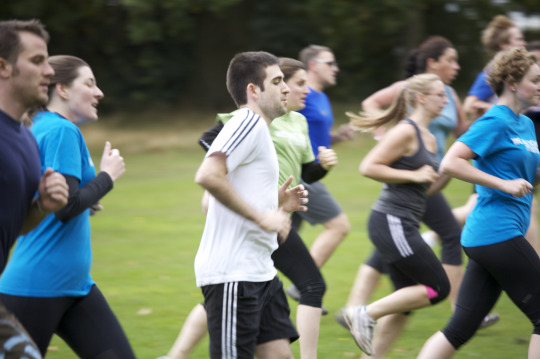
Build a Team of Trainers
As your group grows, you can bring on other instructors to start operating under your umbrella. This is easy to do within a bootcamp and will give you a great opportunity to progress from being the instructor to becoming a manager and a leader.
Attract Clients Who Hate Gyms
Not everyone likes gyms; in fact some people positively hate them! Not only can you open your “doors” to uber keen fitness fanatics, you can create something that is accessible to a much wider audience.

The Sky is the Limit!
A successful bootcamp delivering great results to an incredible community will not only be hugely rewarding and handsomely profitable, it will open the door to further opportunities.
Whether it’s setting up further sites, catering for niche markets or diversifying with further services and offerings. It will certainly put you on the path to achieving your goals and mission.
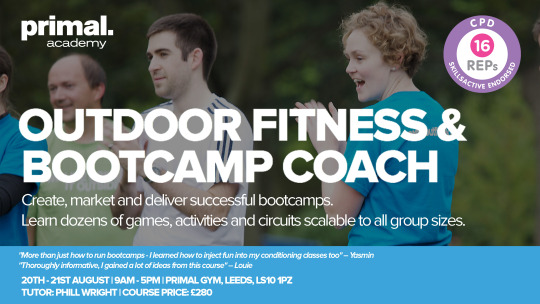
To discover everything you need to know about bootcamps including setting one up, session structure, session delivery, marketing, member engagement and the back end of running it efficiently, be sure to book onto the Bootcamp Instructor course.
#fitness#fitness business#bootcamps#outdoor training#outdoor fitness#education#PT#fitness career#fitness education#fitness course#Primal Academy#Leeds#West Yorkshire#training#workout#goals#results#fat loss#weight loss#clients
0 notes
Text
Perfect Your Pad Work
The top 3 basic pad work mistakes and how to fix them
By Jim Waterhouse, Primal Academy Tutor
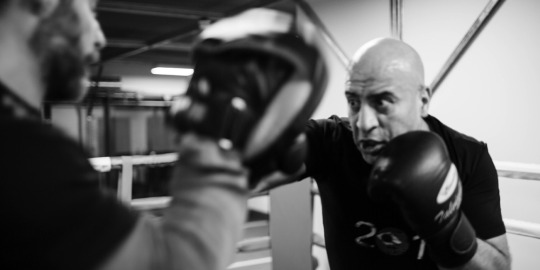
With the fitness industry now flooding with Personal Trainers throughout the country, many coaches are trying to expand their horizons to include every type of training modality known to man.
The main reason for this panic? The age-old question: “What if my next client wants to learn this?”
This concern is completely understandable. For most self-employed trainers, the loss of a client to a rival PT could mean missing out on £100 a month - minimum!
However, the consequence of this race to learn everything is the creation of “Jack of all trades” PTs; coaches who know small amounts of everything, dabble in many training types and buy into most fitness fads, but fail to master any one specific area of expertise.
Now, while expanding your knowledge is never a bad thing, it is vital to ensure you are competent in a new skill before offering it to paying customers.
Although your intention may have been to avoid losing the client by having to refer them to an expert - providing them with a poor standard of coaching will not help them to achieve their goals and could even cause them injury. They’re also likely to leave you anyway when they realise you don’t know what you’re doing.
Boxing and pad work are used in most gyms by most PTs and can be an excellent tool for fat loss and conditioning. Unfortunately, it is not uncommon to see trainers coaching these techniques with very little experience of the skills required.
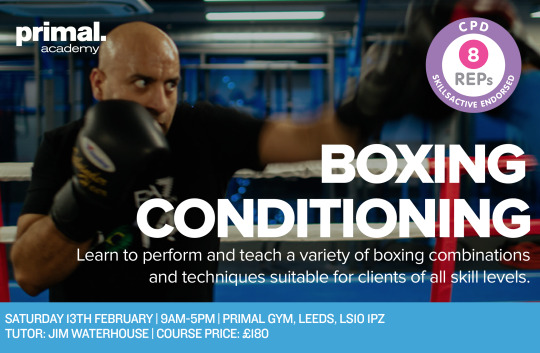
INFO AND BOOKING
As a Kickboxing specialist there are a number of issues I commonly see with people’s pad holding methods in gyms, whether it’s a PT and their client or just a couple of mates doing some boxing work in the ring.
Although there are probably hundreds of issues (I’m not joking) that I could highlight here, I am going to limit myself to the top 3 basic pad work mistakes that will affect your client the most and how to fix them:
Don’t Punch Their Punch
This is when the pad holder moves the pads into the strikes their client is throwing. It’s the most common issue I see, but it can also have the most detrimental effect on your client’s wellbeing.
First of all let me clarify; you do need to have some strength behind the pads and you should move the pads into your client’s punch, the key is how much.
Part of the problem here is where the PT holds the pads at the start of the combo. If a pad holder says ‘right uppercut’ and holds their right pad above their head, they will have no choice but to bring the pad down into the rising uppercut to meet it half way as the puncher will still be aiming for their chin height.
Although this car crash of a high speed pad movement into a high speed glove movement will create a massive bang and let the striker feel like they’ve just thrown a punch with the power of Thor’s hammer, what will actually be happening is:
A gradual lack of power development - as they cannot tell how hard they are punching.
Reduced striking accuracy - keep putting the pads in the wrong place and they start to aim for the wrong place.
Lack of learning - beginners and professionals alike develop technique through external and internal feedback, if their strike always feels powerful because of bad pad holding they will have no internal feedback from which to learn.
Unnecessary shock going back into their arm leading to wrist, thumb, elbow and shoulder injuries, and a massively drained nervous system leaving them weak and shaking for the rest of the day.
The solution...
As a rule of thumb the pads should held in front of you, at an appropriate height for the client, with a comfortable bend in your elbows. The pads should be held in relation to a human, so aim to have your client striking a mirror image of themselves. Put enough strength into the pads so that your arms don’t go flying around everywhere but they still have a solid target to hit.
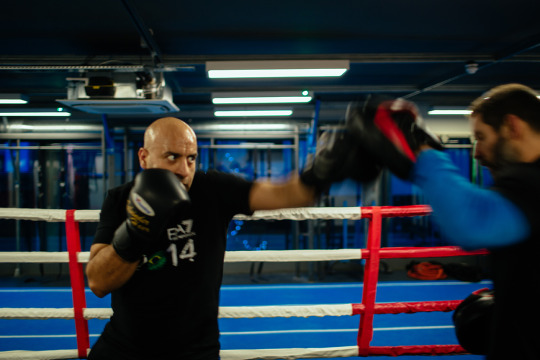
Monkey See Monkey Do
This is mainly a problem for beginners - those who are still learning the basics of moving around, how to sit into their stance and where to keep their hands.
During this learning phase there are so many things to think about that any cue to remind them will help and they will copy what is in front of them.
For example, if you are holding pads and walking around in between combos, your clients may start to mimic your footwork and walk around instead of using the basic step, slide and pivot movements.
They are focusing on something else (maybe keeping their hands up or pushing off the back foot during a cross) so they forget to move their feet properly as it isn’t second nature to them yet.
The solution...
Providing a visual cue of something to copy is an excellent and simple resource for your client. It may be that they don’t copy you and forget about their movement anyway, but the point it that they should have something to copy, and more importantly they’re not subconsciously learning bad habits from their coach, who isn’t paying attention.

Practice Your Pad Work
Quite simply - don’t coach something you don’t practice yourself.
I mentioned “internal feedback” earlier, and how it is key to technical development. Those little things like knowing the difference in power when you turn your back foot compared to when you don’t, or the difference in speed when you throw a hook that starts by your face compared to when it starts down by your hip.
Understanding and experiencing these subtleties for yourself is key to coaching. Without them it will be difficult to truly guide your clients in the right direction when they struggle to learn a new technique or perfect a combination of strikes.
Not only does practice make your technical coaching better, it also gives you the chance to practice different combos, learn which flow well, which are appropriate for different ability levels and which are better for developing power, speed, or conditioning.
You will find that some combinations or pad work drills sound great in your head, but in practice they’re awkward and involve having 3 left hands.
Knowing the difference between these things is not something you will pick up over a weekend course, but is something that you must practice often and for a long time until you don’t even have to think about it anymore.
The solution...
If you genuinely want to develop your arsenal of personal training methods, do it properly. If you are interested in boxing or using pad work training with your clients, find a course that can teach you how to coach it, but don’t stop there...
Join a boxing club, find yourself a pad work partner or if you can afford it, get yourself a boxing coach. Don’t just settle for the bare minimum of knowledge before you try to coach it, and remember that a good coach never stops learning.
For info on Primal Academy’s Boxing Conditioning course and booking, CLICK HERE.

1 note
·
View note
Text
Creating a Mindset for Success
By Sharon Jones - Primal Academy Tutor
Sometimes, the hardest muscle to get in shape is the one ‘between the ears’

As fitness professionals and coaches, we can write the most amazing training programmes and nutrition plans for our clients, but if they are not compliant with these plans - their results will be severely limited.
We’ve all had clients who achieve incredible results and we’ve all had those who could do better. I’ve heard some trainers say that they “fire” their clients if they “don’t stick to the plan”. Well, forgive me if I’m wrong but if everyone could get fit and ripped on their own - they wouldn’t need us!

Our role as fitness professionals is to coach the people who struggle to do it on their own as well as supporting those who just seem to glide towards results. The people we allow to slip through the net should be far and few between.
An understanding of physiology and nutrition are super important but coaching a successful mindset is, in some cases, even more crucial. Effective coaching skills are often the biggest gap in the toolbox of modern day fitness professionals.
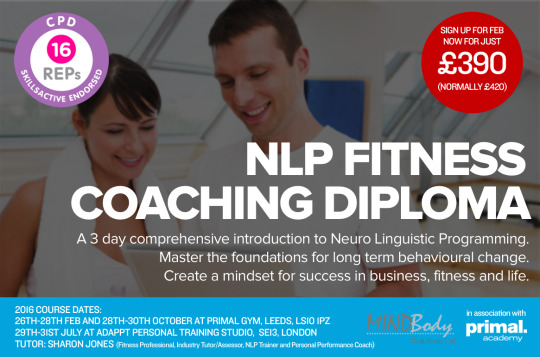
Booking and info: https://goo.gl/X5L134
Everyone Has Lifestyle Barriers
Confidence in ability and self are common ones. We, as trainers, have to take the time to understand these obstacles, even if we don’t agree with them ourselves. It’s the only way we can learn to coach people through them.

Neglecting these all important coaching skills could mean limiting your market, your business and the difference you can make in the world.
So, how can we convert our low achieving clients into ones with more consistent results?
NLP is one of the fastest growing coaching tools available to fitness professionals, sports coaches and athletes. It can help to improve performance at any level and for anyone.
Achieving success is not to just about performing at a high level occasionally or making better food choices now and then, when the conditions are right...the key is to do it consistently.
Being able to reproduce a winning performance is vital for any athlete. Improving compliance with food choices is vital for fat loss success.
Both require an attitude.
NLP can help create that attitude.

The Top Five Benefits of NLP Fitness Coaching
1. Stand out as a Fit Pro because you do things that bit differently.
2. Connect at a level that builds trust and influences change.
3. Create an empowering attitude at will and more consistently.
4. Blow “limiting beliefs” and barriers out the water.
5. Translate goals into results, improving your success rates.
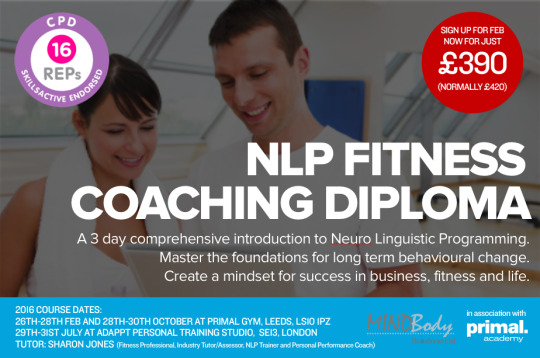
I have teamed up with Primal Academy to run the highly successful ‘Mindset for Success’ NLP Fitness Coaching Diploma. Courses will be run throughout the UK in 2016, the first in Leeds in February.
The course is fully endorsed by REPs and previous course delegates have included Personal Trainers, Lifestyle Coaches, Fitness Enthusiasts, Athletes, Military Physical Training Instructors and Rehabilitation instructors.
To read what others have had to say about the course click here.
Want to book? Click here.
(Payment plans are available on request)
#health#fitness#mindset#success#business#personaltraining#self improvement#self image#fitblr#Fitness Course#fitness education#fitness professional#fitspiration#fitspo#coachinghabitchange#coaching#fitness coach#PT#NLP#nlp training#nlp courses#nlp practitioner#nlp techniques
0 notes
Text
Future-Proof Your PT Career
By Ross Megretton

With more and more people starting careers in personal training, your competition for new clients is going through the roof.
You’re going to have to find new ways to differentiate yourself from the rest of the personal training crowd.
Don’t be the trainer who gets qualified then locks their brain shut with a know-it-all attitude. If you do, you won’t be in this profession for very long!
Meet Steve...
When a prospective client (we’ll call him Steve) first decides to seek help with his health and wants to hire a personal trainer, why should he choose you over your competitors?
New clients don’t get passed out proportionately - you have to earn them. Steve will always choose the person he deems the best, based on his research.
If you want to flourish financially and help improve the lives of the most people, you have to be the person Steve decides is the best.
Stand Out From The Crowd
There are various ways to differentiate yourself. One of which is specialising in a certain area.
You might be...
The Corrective Trainer
The Elite Sports Performance Trainer
The Fat Loss Trainer
The Motivator
The Celebrity Trainer
The Strength and Conditioning Coach
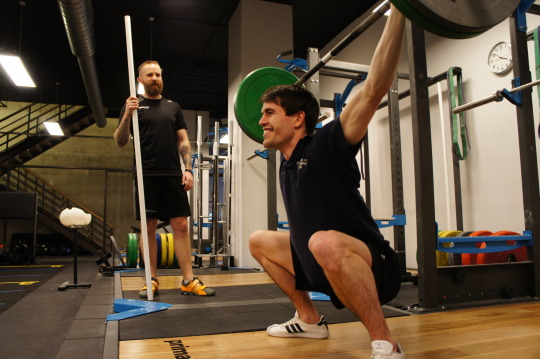
The Nutrition Coach
One thing that used to be a good differentiator was coaching nutrition. You’d stand out from the crowd by telling clients...
What they should eat
When they should eat it
Knowing why they should be eating those things used to be an added extra that only the most knowledgable trainers could do.
Now, it’s become part of the service you MUST provide.
If you’re not providing nutritional coaching, you’re about to be left behind. There are three reasons why…

Info & booking: https://goo.gl/iZvPjo
Number One - Experience
Steve is going to look at what experience you’ve got and decide if it’s suitable for his requirements.
If Steve is like 90% of the people seeking your services, he’s going to want to lose some fat. And Steve isn’t a dummy. He knows nutrition is a huge part of shifting the pounds.
You don’t need me to tell you that the trainer with the Nutrition qualification is going to get the call from Steve over the trainer without.
Number Two - Results
If you think you can get someone from 100kg down to 70kg without addressing what they’re eating, you’re insane.
In the first few months of training, nutrition contributes to 80% of your client’s results. Only 20% comes from the exercise program they’re following.
If there is no nutritional aspect to your program, it’s going to be months before you see any serious visual changes.
And a happy client seeing excellent progress is a client that’s going to keep giving you money. An unhappy client is not.
Number Three - Reputation
Positive testimonials are the most important part of your marketing toolkit.
Imagine Steve’s delight when he sees before and after photos of your clients going from where he is right now to where he wants to be, in a fraction of the time promised by every other trainer around you.
Right now, Steve can’t get to the phone quick enough!
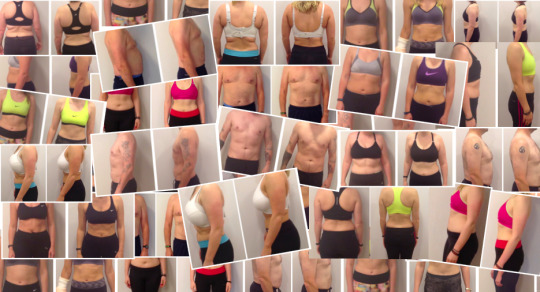
Time To Get Started!
The only way to differentiate yourself with nutrition is to stay ahead of the competition by having the right knowledge and the best ways to apply that knowledge practically.
At Primal Academy, we offer the most up-to-date, scientifically proven nutritional strategies in the country and the practical step-by-step methods of applying those strategies.
Our Effective Nutrition For Fat Loss Course is a two-day intensive course run by our veteran nutritional expert Darren Faulkner who’s got 20+ years of experience in the industry and thousands of success stories.
On the course you will...
Be given the complete protocols for a tried-and-tested 30 Day Fat Loss programme for guaranteed results with your clients.
Learn to understand the hormonal regulators of fat metabolism and fat storage within the body.
Learn the origin and influences on general nutritional guidance.
Get a complete toolkit to assess, support and monitor client fat loss.
The next course is on Sat 19th & Sun 20th December at Primal Academy, Leeds Dock. For more info click HERE.

#health#nutrition#fatloss#weightloss#fat#exercise#training#fitness#fitfam#fitnesseducation#fitnesscourse#personaltraining#pt#leedsgym#leeds#leedslife#fitspiration#Fitness Course#fitness professional#fitspo#wellbeing#education#cooking#fitlife
0 notes
Text
Tied In Knots...
Why releasing muscular tension is about more than just massage and stretching
By Ole Gulliksen (MOst) – Registered Osteopath
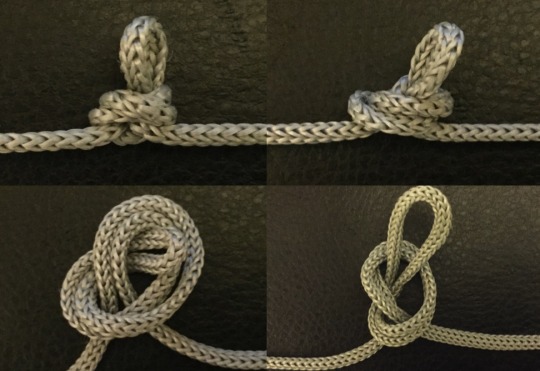
“Trigger points” and “tight muscles” are terms that are often interchanged - with the occasional “knot” thrown into the mix of course. Clarifying the mechanical differences of these problems can be the key to resolving them.
Stretching and massaging are useful techniques to increase flexibility when a muscle is tight but to any athlete, whether recreational or professional, it is obvious that there are more persistent problems than basic tightness.
In the last 15 years, research has become more focused on what is generally known as Myofascial Trigger Points (MTrPs) - what most masseurs and some other therapists would refer to as ‘knots’.
In 2006, Dommerholt and his colleagues described an MTrP as: “A hyper-irritable spot in skeletal muscle that is associated with a hypersensitive palpable nodule in a taut band.”
More recently Lluch et al. (2015) elaborated on some of the characteristics of an MTrP as: “A taut band of skeletal muscle, which is painful on compression that, when stimulated can evoke a characteristic pattern of referred pain and related autonomic responses.”
(There are two sub-categories or MTrPs - latent and active. Latent MTrPs are not very problematic until challenged and pressurised - active ones are. More details available at upcoming workshops.)

(Info & booking: https://goo.gl/oKXXDH)
Both groups of researches refer to a tightness and painful reaction to mechanical pressure. In addition to this, they specify in their studies that the tension is held within a much localised part of a muscle.
In other words...it is not the whole muscle that is tight.
Therefore, the solution to this problem is less straight forward than that of a muscle which is simply tight due to long hours of sitting at a desk or a hard gym session.
Positional Release Therapy
PRT, a therapeutic technique with good evidence behind it, may help to resolve MTrPs.
As a former servant of the sea squadrons of the Norwegian Special Forces I’ve found a practical way of understanding this approach...
The basic idea can be illustrated with a piece of rope with a knot on it.
A length of rope is severely reduced by the knot. Similarly, an MTrP along the length of a muscle can make a joint appear immobile or even give the impression of a tight muscle group:

If we visualise the right levator scapulae as our rope, the rope above would represent a relaxed head position (laid down). With no tension or challenge of movement, a latent MTrP doesn’t present any problem.
However, if we stand up and let gravity pull our shoulder blades into depression (downwards) we may start seeing some restriction of movement as with the rope with some tension applied:

Depressing our shoulder blades further and side bending our heads to the left to stretch, could seem the obvious course of action when feeling tightness.
But imagine what it is doing to the piece of rope:

As you can see, the tension has led to the knot becoming more troublesome.
The more appropriate approach to this ‘knotty issue’ would be to give the rope some slack:

With some space on either side of the knot, it is far easier to manoeuvre the crossing ropes and prepare it for stretching without knotting further.
In a biomechanics scenario, this would look like moving the neck into extension (backwards), leaning it towards the right shoulder and elevating the shoulder blade (moving it towards the head).
With these movement applied, even gentle massaging of the MTrP can sometimes undo the tension in the muscle tissue. As you gently re-introduce the movement initially appearing restricted (or pull the rope at either end) you may see a significant change:

The length of time to hold a position of release is determined by the therapist and depends on the changes they can feel in the tissue texture. It can be anywhere from a few seconds to a few minutes.
Dealing with MTrP may require several repetitions of this technique. Occasionally it could be necessary to do several treatment sessions over a period of time, all depending on the severity of the problem.
To fully understand the complexity of MTrPs, come to my workshop at Primal Academy on Friday 18th December. We’ll look at the structures involved and the mechanical and neurological underlying reasons for the development of MTrPs as well as other solutions to variations of the problem and techniques for dealing with them.
Looking forward to seeing you there!
Ole Gulliksen (MOst) – Registered Osteopath

#health#fitness#massage#osteopathy#sportsmassage#injury#rehabilitation#corrective exercise#personaltraining#athlete#athletic#physiotherapy#recovery#wellness#leeds#leedsgym#fitness education#fitness course#skills#education#muscle
2 notes
·
View notes
Text
3 Simple Tests To Identify Mobility Problems
By Oliver Worrell and Darren Faulkner, Primal Health Ltd.
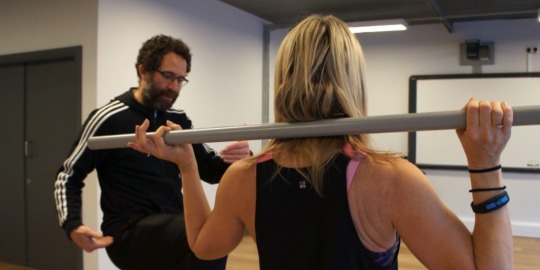
Why Screen Client Movement?
Whether your client’s goal is fat loss, muscle gain or increased fitness, movement is going to be the foundational principle of any exercise programme you prescribe.
As an exercise coach, your number one provision must always be to avoid injury so before you start increasing your client’s strength and conditioning you must accurately screen their movement patterns to identify their “weak links” and asymmetries, improve their areas of weakness and ensure that you are not simply building strength into their movement dysfunctions.
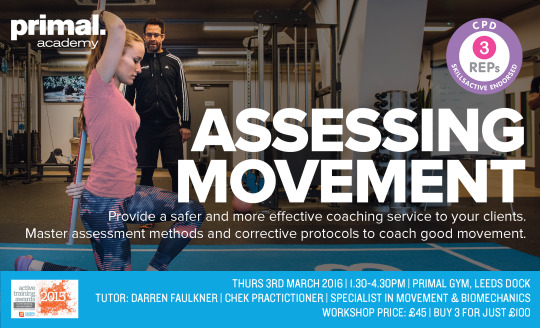
BOOKING AND INFO
The Functional Movement Screen, developed by the Physical Therapist Gray Cook, is a simple seven step screen based on observing and scoring seven fundamental patterns of movement.
Two screens look at mobility, the very foundation of movement, two look at stability, whilst the final three look at the “big moves” - deep squat, hurdle step and the in-line lunge.
By screening these seven areas of movement it is possible to gain an excellent understanding of where your client has issues that may effect their training performance, results and likelihood of getting injured in the long run.
At Primal Gym, every new member is taken through this series of screening tests. In the video below you can see three of these movement screens being demonstrated.
Shoulder and hip mobility are the priority movements whilst the squat is arguably the most important exercise to screen in terms of movement optimisation and injury prevention. Many clients, for example, get injured whilst performing poorly prescribed loaded squats.
youtube
Screening Fundamentals
Each test is observed and the client is given a score between 0 - 3 for their ability to perform the given movement:
A score of 3 would reflect the ability to perform the movement accurately and without flaw.
A score of 2 would indicate that the movement could be performed but only with some form of mechanical compensation, such as squatting with heels raised.
A score of 1 is given when the movement couldn't be performed, even with compensations. Finally, a score of 0 is given if any pain is felt during the given movement.
What To Look For

SQUAT:
Good to Go = Score 3
If the upper torso is parallel with the tibia or towards vertical, the femur is below horizontal, the knees are aligned over the feet and the dowel is aligned over the feet, we can safely say that the client is able to perform the deep squat with good form and so we know we can load that movement pattern.
Satisfactory Movement = Score 2
If the client can perform this movement perfectly as described above but only when they have the compensation of raised heels, we would give the client a score of 2 and know that we can train that movement as long as we work to correct the need for the compensation.
Poor Movement = Score 1
If the movement can not be performed perfectly as described, even with the heels raised, we would give the client a score of 1 and know that we should not load that movement until the client can at least get to the compensation stage. We can provide corrective exercises and coaching to strengthen this weak link.
Pain = Score 0
If pain occurs during any part of the movement screen or the clearing tests, stop the test and recommend the client seeks assistance from a GP, physiotherapist or osteopath.
The same system is applied to each movement screen, the criteria for the shoulder and hip mobility screens are described below.
SHOULDER MOBILITY:
Poor Movement = Score 1
If the fists are not within 1.5 hand lengths.
Satisfactory Movement = Score 2
If the fists are not within 1 hand length.
Good to Go = Score 3
If the fists are within 1 hand length.

ACTIVE STRAIGHT LEG RAISE:
Poor Movement = Score 1
With the non-moving limb remaining in a neutral position, the vertical line of the ankle stays below the knee.
Satisfactory Movement = Score 2
With the non-moving limb remaining in a neutral position, the vertical line of the ankle resides between the thigh and knee.
Good to Go = Score 3
With the non-moving limb remaining in a neutral position, the vertical line of the ankle stays below the ASIS (pelvis) and thigh.
What Next?
The client’s final score gives us a good indication of their weak links and how you would factor them into an effective program. We can discern whether the issue is likely to be mobility, stability, learned patterns or even previous injury.
By working on the weak links, strengthening what’s already working and avoiding potentially harmful loaded movements, we can be very effective in building fundamental movement and strength in our clients.
Using this system of screening and re-screening and by learning a series of mobility, stability and corrective protocols for each movement, we can be confident that we are working with our client from a safe, fundamental starting point and measure the effectiveness of our exercise prescription.
If you're not assessing you're guessing right?
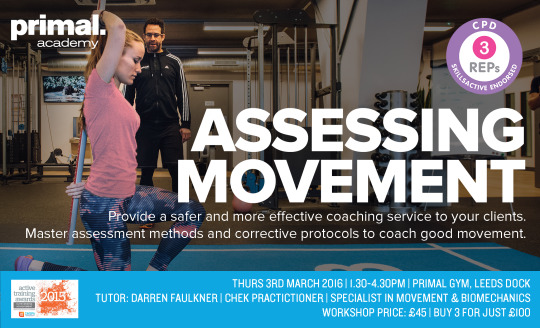
To find out more, learn assessment methods and corrective protocols to coach good movement, book onto Primal Academy’s upcoming workshop on March 3rd: Assessing Movement.
#fitness education#fitness course#exercise#fitness#movement#corrections#corrective exercise#strength
0 notes
Text
Creating Community in Your Bootcamp
by Sarah Vollans, OutFIT Instructor
youtube
Sally walks nervously across the car park towards a gathered group of people, she knows no one. She feels her heart racing, and begins to think this was a stupid idea. “What will they think of me? I’m so unfit this is embarrassing, I’ve forgotten my water, why did I think this was a good idea?”
“Hi, how are you? Welcome to the session, let me introduce you to Katy, she is quite new as well but will look after you. Take it at your own pace and enjoy it. It’s so great to see you here”
Sally is now a Bootcamp regular, having achieved her weight loss goal, but just as importantly for her, she made some amazing new friends. However, it could have been a very different story.
So does this community thing matter? Absolutely, yes. Is it the only thing that matters? Of course not, no. However, building community in any area of life, and especially in Bootcamps, is essential for growth, success and integrity, but it is a skill.
Check out the video above of my OuFIT group in Meanwood Park, who were asked how they think a sense of community is created during in the sessions. They’re all wearing orange to raise awareness of Batten Disease.
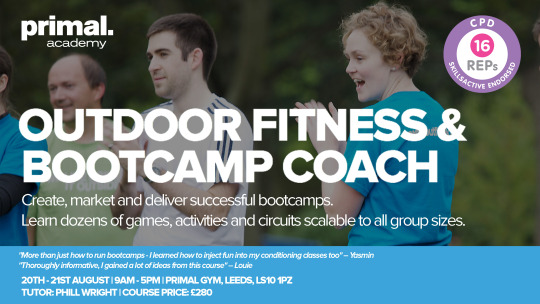
BOOKING AND INFO
What is community?
“A body of people…sharing experiences….same attitudes”. These are some of the things the dictionary says about it. Think of a body. It’s made up of a multitude of components that all have to work together doing their bit to make it function effectively. When one bit suffers, it all suffers. In a community, people share the highs and lows of their experience together, and draw closer through it.
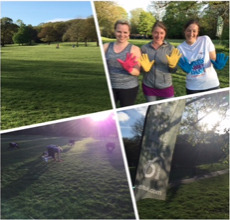
So how do we build it?
Well, it’s complex, and depends a great deal on who is in the group, but here are some of the things I’ve learnt along the way…
Build relationships with your members, between you and them, and them with each other! The starting point here is to know your “niche”. Who are you trying to reach in your sessions? Work out who those people are and go find them. Get to know them and invite them along to a session personally, because people want to be known and valued. Another key part of this, and perhaps the most crucial part, is the welcome. It seems so basic, but surprisingly so often forgotten or not done in a way that makes people feel exactly what it says on the tin... Welcome!
Invest time - Be willing to put the graft in outside of your sessions. Send a text or an email to see how people are, especially if they haven't been around in a while. Attend local charity events and offer your sessions free through auctions and raffles. Recognise and celebrate things going on in your member’s lives... New jobs, new babies, taking part in events for charity etc. The list is endless.
Events - Plan social events where people can get to know each other outside of the session and continue to build those relationships, links and networks. Taking part in runs, races and obstacle events together can be an incredible community-builder. Like in many life situations, going through something tough and challenging with others creates a strong bond.
Be present - What do I mean? I mean, give of yourself. Be passionate and enthusiastic about what you do, even when you don’t feel it ( let's be honest we've all been there!) Be early and ready for sessions because this shows people you take it seriously and that it matters to you. Plus, it gives you more time to chat to people as they arrive, hear their reasons for being there and put them at ease.
Ownership - Every single person who comes to your session has their own unique story and reasons for being there. Make sure you know as much as you can about those reasons. The more informed you are, the more you can tailor your sessions to meet their individual goals and needs, giving a sense of ownership to people. Your members are your biggest advocates - use them to greet and take care of new people as well as to advertise and market your sessions. If they love it, gain confidence and feel part of a family they will spread the word to others.
Have fun - Many would say one of the keys to a successful bootcamp is a good balance of fun and challenge. I agree with them! Quality banter is key. A good belly laugh goes a long way in building friendship. Remember though, that people are there to work hard, be challenged and get fit so take the time to find an equilibrium that suits your group.
Themed Events - Another great way to draw people together and get new people in, is to run themed events. These could be seasonal, based around current events or charity days, like the ‘wear orange’ day I did with my Meanwood group to raise awareness of Batten Disease (see video above).
Social Media - Post it, tweet it, snapchat it…the ways to engage with people are vast, but again - an essential part of getting information to people, starting a multitude of different conversations, and encouraging and building good relationships.
Don’t forget, building and nurturing community is not the same as creating a “clique". Far from it. In fact, I would say it’s the opposite. Bootcamps can be transient, with new people attending all the time, and individuals often leaving due to other commitments, then returning at a later date. Maintaining a welcoming, encouraging, challenging, fun and non-judgemental attitude and atmosphere, regardless of who walks up to your flag, is paramount.
Be patient. It's not easy, it takes time. It takes getting it wrong and picking yourself up and going again. It takes commitment, effort and hard graft but the rewards are incredible: A mutually supportive network of people, growing together in fitness and friendship to achieve goals, whilst always welcoming and embracing newcomers to the family.
So...always be ready and willing to put in the time and effort, within and outside of your sessions. Be honest and passionate about your work and listen, listen and listen some more to your greatest advocates - your members.
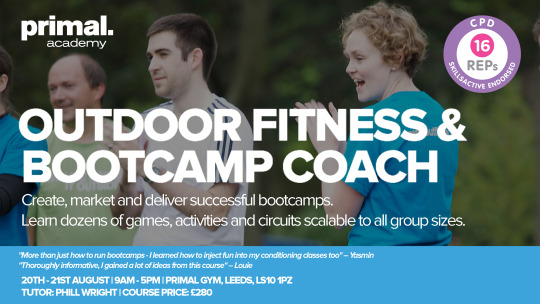
BOOKING AND INFO
#bootcamp franchise#bootcamp#outdoor fitness#fitfam#community#fitness#fitness education#fitness course#fitpro
0 notes
Text
Should You Train All Clients Like MMA Athletes?
By Jim Waterhouse
What do all clients want? Fat loss, muscle gain, power and strength, a decent fitness level and some flexibility or all of the above? The answer of course is that every client you train has different ideas for how they want to improve physically, and varying reasons for doing so. This means that we have to limit the end goals and specific training parameters for each fitness type because nobody trains for every aspect of fitness, do they?
Enter…*dramatic drum roll*…the MMA Athlete!
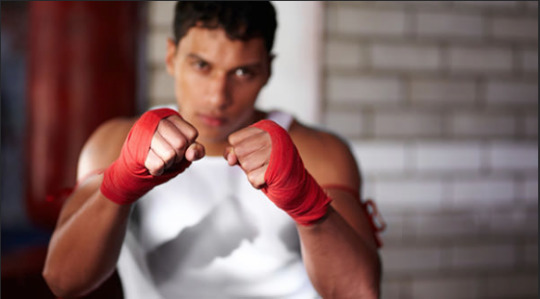
Mixed martial art practitioners who star in competitions such as the UFC are regarded as some of the fittest people on the planet. With a complete fitness profile comes a high intensity training regime that demands 100% from the athlete, enables them to build muscle and strength, develop power, keep flexible but stable through the joints, master hand-eye coordination and agility, and maximise their V02 Max potential, while keeping their body fat down to a minimum. If this sounds like something that would be ideal for your clients - read on!
MMA and the wider branch-off of UFC is a sport like no other. Competitors are pitted against each other in the cage to fight until knockout, submission or an overall winner can be decided upon by points and judges decision. These matches take fighters from any style of combat system, ranging from the traditional striking forms of Kickboxing, Karate and Boxing, to the more close-range martial art of Muay Thai, into the grappling and takedown specialists of Judo, Jujitsu, and Greco-Roman Wrestling, and finally into the ground fighting arts of Catch Wrestling and Brazilian Jujitsu (BJJ).
While most MMA athletes do tend to have a stand-out preference in their style, all competitors must master the 5 main areas of fighting if they ever want to have a chance of succeeding: striking, clinch work, takedowns, submissions, and finally ground and pound. Now although this may seem to have zero relevance to your client’s needs and wants, you must think about how each combat style has a corresponding area of fitness that must be developed to perfect that skill.
Striking obviously requires a lot of power but is also dependant on hand-eye coordination, speed, and flexibility. Clinch work is a combination of upper body strength and balance. Takedowns and throws require impeccable timing, core strength and the ability to control and manipulate your centre of gravity. Ground work and submissions are mainly a strength game but grappling is also reliant upon muscular endurance, isometric holds, and joint stability. “Ground and pound” needs a bit of everything; power for the big heavy strikes, with balance and strength to maintain the dominant ground position. The matches themselves range in length from 15-30 minutes with a pace consistently above the 80% mark, made up of single bursts of power, 2-20 second periods of strike combos or clinch work, and non-stop movement and defence, meaning that all three energy systems are required.
All of this means these super-athletes have to train insanely hard to stand any chance of winning and with matches taking place at intervals throughout the year there is no ‘on’ or ‘off season’. They have to train as efficiently as possible to maximise the outcomes of each session, keeping the working intensity as near to 100% as possible for enhancing V02 Max, endurance and recovery rates. It also means that these elite athletes have training regimes that are more similar to the average person than you might expect, as opposed to most team sport competitors who have to move through a ‘bulking’ phase, into strength, power, weight cutting, and endurance for 11 months of the year, all for 1 months worth of competition at the end.
The training styles used by MMA practitioners usually involve full body exercises that work through multiple planes of direction, complete range of movement, and to the very limit of their strength or power generation. You will often see typical ‘functional’ exercises being drilled including kettlebells, olympic lifting, plyometrics, battle ropes, tyre and sledgehammer work, sandbags, weighted carry/sprints, and of course pad-work. What all of these exercises have in common is that they are compound movement with minimal muscle isolation, and they can be used to develop power while also allowing the athlete to increase their cardio endurance.
If you have ever seen any of the athletes in the UFC or similar combat sports, you will no doubt have noticed that they are clearly in shape, and normally shredded to the max! It would probably surprise you then to learn that their nutrition is not geared towards traditional ‘fat loss’ such as carb cycling, fast days or calorie counting but instead are based around fast recovery rates, and the ability to maintain 100% effort during training throughout the week so that their performance is at its optimum level. This in turn is what keeps their body fat percentage so low, and skeletal muscle mass so high.
What is the end result of this mix of high intensity training then? A lean athlete (high muscle and low body fat) that can work through their full ROM, high strength to bodyweight ratio, able to generate maximal power, super fit with high Vo2 max and recovery rate, can coordinate and control fast movements with good balance and stability throughout their joints.
Does this sound like something you want for your clients? If so, why not book onto our Level 1 MMA Conditioning course to get a look at how to train MMA style!
0 notes
Text
2 Common Myths With Exercise During Pregnancy
by Jenny Wright
Whilst preparing for delivering a workshop on pre & post natal exercise, Jenny clarifies some of the common misconceptions when it comes to training with a bump.
In the past 3-4 years, perceptions around exercise through pregnancy have changed massively. In general, people are a little more informed and a little less scared about it. However there are still a few taboos knocking around that make it really hard for pregnant women to know what’s fact and what’s fiction.
Here are just two of them:
Pregnant women should not let their heartrate go over 140 bpm
Ok – so how can this possibly be right? Women come in all different shapes, sizes, ages, fitness levels, endurance levels etc. So how can this number work for everyone? With training in general, and especially for pregnancy, there is no such thing as generalisation. People are different, pregnancies are different, babies are different. To be fair – this ‘advice’ was given to try to ensure that the intensity of any workout was not too much for a pregnant exerciser. This is an important point – let’s not forget that the mum is carrying a precious load here. However, there are better ways of achieving this. The easiest one is that the pregnant woman works out her own rate of perceived exertion (RPE). On a scale of 1 to 10, work out in a challenging yet comfortable zone. Pregnant women should not get to the collapsing in a heap from exhaustion stage.
You should not lift weights when pregnant
So that means that a lady with a toddler should not lift him whist pregnant; they should not lift shopping bags, they should not pick up their toddler when they’ve fallen over?? Of course not! Weight training is a hugely important method of exercise for pregnant ladies. Weight bearing exercises help train the body for strength and stability. This is especially significant for pregnant women as their ligaments will become looser due to the relaxin hormone (released in order to allow the pelvis and hips to move to allow passage of the baby through the birthing canal). It makes sense for pregnant women to keep adequate joint stability, and to do what she can to increase muscular tone, strength and coordination to help the joints work properly.
To find out more about the workshop and coming courses, visit our calendar of upcoming events here or drop us a line on 0113 831 3260
0 notes
Text
6 Reasons Why Everyone Should Deadlift
by Phill Wright
One of our top coaches; Chris Kershaw ran a great deadlifting masterclass earlier this week and it got me thinking, why aren’t more people including deadlifts in their training? Deadlifting is used across the world by all top athletes and has certainly been a staple part of my training for a good few years to great benefit yet it baffles me that I don’t see more people lifting. Whilst I’m not a world record holder, I do push myself on it and I’ve even managed triple bodyweight before but really, that’s not important, what’s more important are the benefits of this great exercise and why I think you and your clients should be hitting it hard.

It’s worth mentioning that despite having said ‘everyone’ in the headline, there are going to be certain individuals who for numerous reasons may be unable to perform this exercise. This is a given and there’ll be loads of alternatives that work similar muscle groups in this situation. My justification is that using ‘Some people should be deadlifting’ wouldn’t have had quite the same ring to it and I needed to get your attention somehow.
It’s also worth me mentioning that when I talk about deadlifting, I’m not talking about deadlifting with tins of beans or your cat, I’m talking about going heavy. Of course you need to learn the movement first but once you’ve got that physical competency, unless there’s good reason to avoid it - you should start stacking the weights on to maximise the benefits.
So, why the hell should ‘most’ people be deadlifting?
Total body strength. The group of muscles driving this movement are so vast that the development is literally head to toe, beats preacher curls right!! Your back, glutes, hamstrings, forearms, core, they’re all getting stronger. If you’re stronger, then you’re likely going to be faster and more powerful. For the geeky types, the added benefit of building strength through deadlifting is that it’s in one of the most fundamental movement patterns; hinge (extension) which is critical for day to day life.
It adds lean mass like no other exercise. Following from the last point, if you’re building strength in such a vast portion of the body then you’re adding muscle and if you’re doing this then you’re getting leaner. Unless of course you’re wolfing down garbage food and piling on the fat at the same rate.
Simple to learn / simple to progress. The movement doesn’t require months and months to learn and master. It’s straight forward and anyone can learn and therefore pick it up quickly and start benefitting from it rapidly.
Grip strength. You may not be wanting to turn yourself into a no-ropes rock climber or a ninja warrior but having good grip helps with so many things, least of all those hefty trips back from the supermarket.
It teaches mental preparation and self belief. When it starts to get heavy, the need to get yourself in ‘the zone’ becomes more and more important. An ounce of doubt in your mind before locking your grip around the bar and it just won’t budge. The art of telling yourself ‘I can’ becomes second nature and how much can we all benefit from having a little more of that in our life.
It hits the posterior chain (muscles down the back of your body). This one perhaps reaches the geeks again but relevant for everyone. We’re all a little guilty from time to time of looking in the mirror, not loving what we see and then targeting those sorry areas with specific exercises e.g crunches. This approach leaves all the muscles down the back of your body feeling rather sad, lonely and neglected. Furthermore, hitting mirror muscles is crap for your posture and will undoubtedly evolve into some sort of back or neck pain. Deadlifting hits your posterior chain and will keep your muscles much more in balance and be a big plus for your posture.
So, before you start chalking up and ripping that bar off the floor, there’s a couple of things that are absolutely vital; make sure you have good form and make sure that you programme it in sensibly into your training regime. If you need any guidance on either of these, pop into our gym or drop us an email [email protected].
Here’s British Strongman Eddie Hall who recently smashed the world record.
youtube
#deadlift#deadlifting#gettingstronger#strength#strengthtraining#stronger#leaner#ironsports#strongman#strongmantraining
2 notes
·
View notes